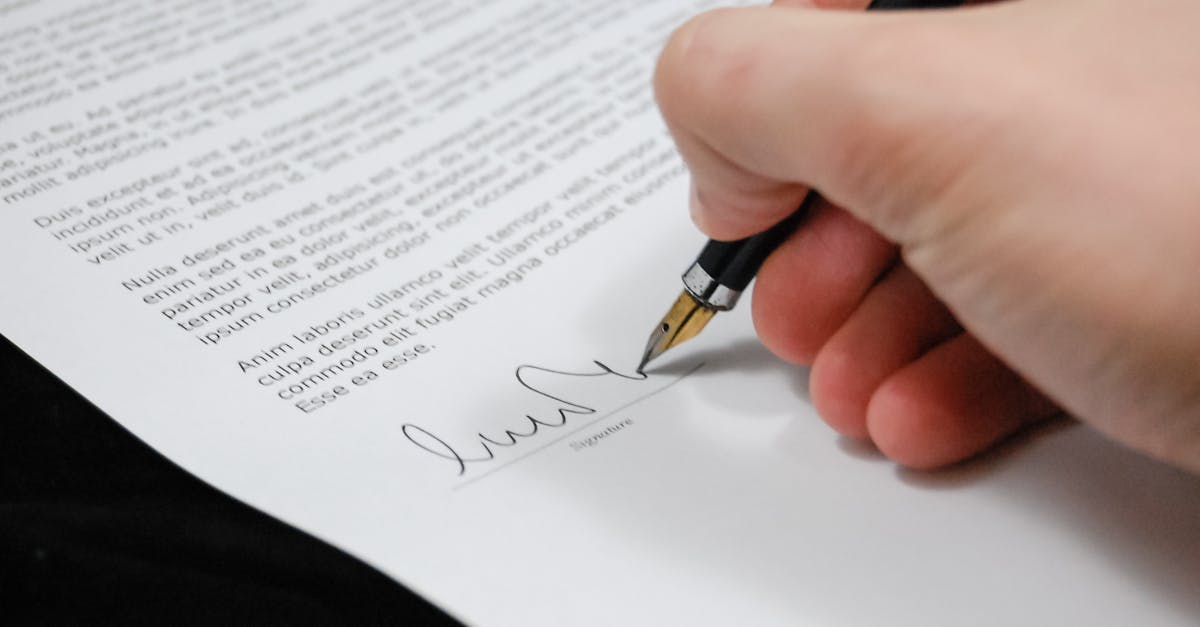
Incorporating Supporting Evidence and Examples
When drafting legal documents, it is crucial to incorporate supporting evidence and examples that bolster your arguments and assertions. By providing concrete evidence and real-life examples, you can significantly enhance the credibility and persuasiveness of your document. Including relevant evidence demonstrates a thorough understanding of the subject matter and adds depth to your content.
Moreover, supporting your statements with examples not only adds clarity to your writing but also helps the reader grasp the concepts more easily. Whether you are outlining a case, making a recommendation, or providing an analysis, backing up your claims with tangible evidence can make your document more compelling and robust. Remember that while evidence is essential, the quality and relevance of the examples you choose to include can make a significant difference in how your document is perceived.
Strengthening Arguments with Relevant Details
To strengthen arguments within legal documents, it is imperative to incorporate relevant details that provide clarity and substance to your points. Consider including specific examples, case studies, or legal precedents that support your assertions. By grounding your arguments in real-world scenarios or authoritative sources, you enhance the credibility and persuasiveness of your document. For instance, when drafting legal documents related to contract disputes, citing relevant court cases with similar facts can bolster your position and guide the reader towards a more informed understanding of the legal principles at play.
Moreover, providing detailed explanations and analyses of key points can further solidify the arguments presented in the document. By delving into the nuances of applicable laws or regulations, you demonstrate a thorough understanding of the subject matter and showcase your expertise. When drafting legal documents, avoid ambiguous or vague language that may leave room for misinterpretation. Instead, strive for clarity and coherence in your arguments to ensure that the reader can follow the logical progression of your reasoning effortlessly.
Polishing the Language and Style
When it comes to drafting legal documents, it is imperative to pay close attention to the language and style used. The language should be precise and formal, conveying the intended message with clarity. Avoid unnecessary jargon or complex wording that could obscure the document's meaning. Instead, opt for straightforward language that is easily understood by the intended audience. Furthermore, the style of the document should be professional and consistent throughout, maintaining a tone that is appropriate for the legal context.
Remember that the language and style of a legal document not only serve to convey information but also reflect the credibility and professionalism of the drafter. Therefore, take the time to review the document for any inconsistencies or ambiguities that could detract from its effectiveness. Ensure that the tone remains objective and impartial, presenting the information in a logical and organized manner. By polishing the language and style of your legal documents, you not only enhance their readability but also strengthen the overall impact of your arguments.
Ensuring Clarity and Coherence
Clarity and coherence are essential components when drafting legal documents. To ensure clarity, it is imperative to use precise and concise language that leaves no room for misinterpretation. Legal documents must be clear and straightforward, avoiding unnecessary jargon or complex terminology that could confuse the reader. Additionally, organizing the information in a logical manner helps to maintain coherence throughout the document. By clearly outlining the main points and supporting details, the reader can easily follow the argument presented in the document.
When drafting legal documents, it is crucial to maintain coherence by carefully connecting your ideas and ensuring a smooth flow of information from one point to the next. Transition words and phrases play a crucial role in maintaining coherence by linking sentences and paragraphs seamlessly. Furthermore, utilizing headings and subheadings can help to structure the document in a coherent manner, guiding the reader through the different sections effectively. By paying attention to clarity and coherence in drafting legal documents, you can ensure that your message is communicated effectively to the intended audience.
Reviewing and Revising for Accuracy
Reviewing and revising for accuracy is a crucial step in the process of drafting legal documents. Once the initial draft is complete, it is essential to carefully examine the document for any errors, inconsistencies, or areas that may need further clarification. This stage involves a meticulous review of the content to ensure that the information presented is accurate, consistent, and aligned with the intended message.
During the review process, it is important to pay close attention to details such as grammar, spelling, and punctuation. These elements play a significant role in the overall clarity and professionalism of the document. By double-checking for any grammatical errors, misspelled words, or misplaced punctuation marks, you can enhance the quality of your work and demonstrate your attention to detail. Drafting legal documents requires precision and accuracy, making the review and revision stage a critical component of the document preparation process.
Checking Grammar, Spelling, and Punctuation
Checking grammar, spelling, and punctuation is a crucial step in the process of drafting legal documents. Errors in these areas can detract from the professionalism and credibility of the document. Ensuring that your writing is free of grammatical mistakes, spelling errors, and punctuation inconsistencies is essential for communicating your message effectively.
When reviewing your document for grammar, be sure to pay attention to subject-verb agreement, verb tenses, and sentence structure. Correct any spelling mistakes, ensuring that names, terminology, and legal terms are all spelled correctly. Punctuation should also be carefully checked to ensure proper usage of commas, periods, semicolons, and any other punctuation marks. By meticulously proofreading and editing your document for grammar, spelling, and punctuation, you can present a polished and professional piece of writing in the realm of drafting legal documents.
FAQS
Why is it important to incorporate supporting evidence and examples in a document?
Including supporting evidence and examples helps strengthen your arguments and adds credibility to your writing.
How can relevant details be used to strengthen arguments in a document?
Relevant details provide depth and context to your arguments, making them more persuasive and compelling to the reader.
What is the significance of polishing the language and style in a document?
Polishing the language and style enhances the overall readability and professionalism of the document, making it more engaging for the audience.
How can clarity and coherence be ensured in a document?
To ensure clarity and coherence, make sure your ideas flow logically and are clearly presented with smooth transitions between paragraphs and sections.
Why is it important to review and revise a document for accuracy?
Reviewing and revising a document helps catch errors, inconsistencies, and inaccuracies, ensuring that the final version is polished and error-free.
What should be checked when reviewing a document for grammar, spelling, and punctuation errors?
When checking for grammar, spelling, and punctuation errors, pay attention to subject-verb agreement, proper punctuation usage, and correct spelling of words to maintain the document's professionalism and credibility.







